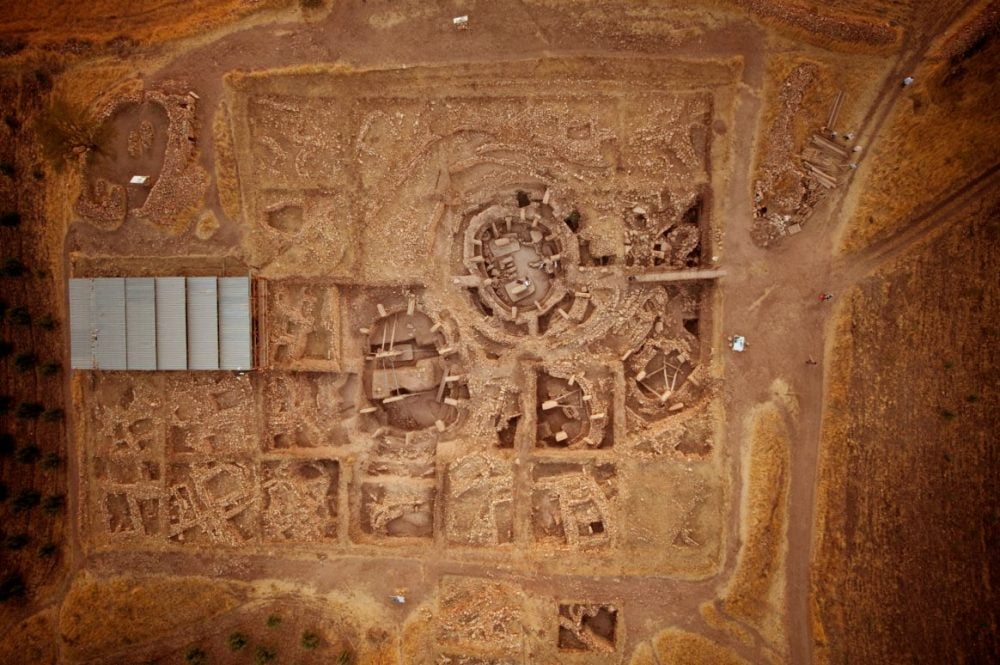The history of Egypt’s Oldest Pyramid Explained in 5 Minutes

There are a few ancient monuments in the history of humankind that are as significant as the Pyramid Complex of Djoser at Saqqara. Together with the structures that surround it, the Step Pyramid of Djoser is seen as an ancient revolutionary monument that forever changed the history of monument building in Egypt and ancient Egyptian architecture.
Egyptologists agree that we can say without exaggeration that Djsoer’s Pyramid complex constitutes a milestone in the evolution of the monumental stone architecture in Egypt, and perhaps in the world. Never before was a construction project of similar magnitude attempted in Egypt. This is why many academics say that Djoser’s Pyramid is the first freestanding stone structure in Egypt.
It as precisely at Djsore’s Pyramid complex that limestone was used for the fruits time on a large scale as a construction material, and it was so there where Egyptologists such as Ahmed Fakhry, Mark Lehner, and Miroslav Vernser say that the idea of a monumental royal tomb in the form of a pyramid was born.
The idea that it was Djoser who introduced Egypt to the monument stone building is attested in a Nineteenth Dynasty inscription in Southern Saqqara where we see how the ancient Egyptians of the time described Djsoer as the “opener of stone,” which we can understand as a reference of Djoser being the inventor of stone architecture in Egypt.
Compared to predynastic and early dynastic architecture, the Step Pyramid is a massive leap forward and is an entirely new product, a product made of stone material.
Verner explains that at first, the architectonics forms did not precisely correspond to the new material since the latter required different work procedures and methods, which the builders of the time had to find and then try out. It is why the builders of that time were strongly influenced by earlier tombs of the Early Dynastic Period.
These tombs wer made of lesser materials such as mudbrick, wood, reeds, strange, and matting. That’s why the Step Pyramid of Djoser was revolutionary and bizarre; never before had something been attempted of that size and using entirely new materials.
Nonetheless, the builders copied the earlier architectonic elements in stone. The limestone walls with niches are found to imitate structures that were before made of wooden planks, along with ropes and poles hung with mats.
The stone pillars–imposing as they are–are meant to mirror the enormous papyrus stalls.
In a sense, Egyptologists believe that Djoser’s pyramid builders introduced new material in the architecture of the time, but retained elements of previous dynasties by mirroring them in stone. This, in itself, was a revolutionary achievement that directly contributed to the evolution of ancient Egyptian architecture.
The Step Pyramid
The implications of the architecture behind the Step Pyramid of Djoser are drastic, to say the least.
Djoser is the name given to the Third Dynasty ruler by New Kingdom Visitors to the site more than one thousand years later. The only royal name found on the walls of the complex is the king’s Horus name, Netjerykhet.
Prior to this Third Dynasty King, the most commonly used material in the construction of larger buildings was mudbrick. However, with Djoser’s reign, this, like many other things, changed.
His royal architect Imhotep, Chancellor, and Great Seer of the Sun god Ra (see here a glimpse of why I believe that the worship of the Sun directly influenced the construction of the Step Pyramid and why I agree with Czech astronomer Ladislav Krivsky) revolutionized ancient Egyptian architecture by building the Step Pyramid at Saqqara.
The Step Pyramid of Djoser was enclosed by a massive limestone wall, 10.5 meters in height, and 1.645 meters long. Inside it, a massive complex was built that spread across 15ha (37 acres( of land, the size of a large town in the 3rd millennium BC.
Inside this enclosure are a plethora of buildings, temples, and dummy structures, many of which have still not been fully understood to this day.
But of all the structure contained in the limestone wall, the centerpiece was the Step Pyramid, a massive monument rising some 65 meters into the air, contains around 330,400 cu—meters of clay and stone. The Pyramid was made of six superimposed structures stacked one atop the other.
The process of building the Pyramid
Egyptologists agree that the Pyramid of Djoser was erected in various stages. It is generally agreed that the Pyramid was initially in the form of a square mastaba, which was later evolved to the final six-step Pyramid we see today.
Although there are no written records that speak of the design, planning, or construction of the Pyramid, Egyptologists such as Jean-Philippe Lauer believe that the Step Pyramid was built in six stages dubbed M1 – M2 – M3 –P1 – P1′ and P2.
If the six stages are indeed correct, the Pyramid was likely expanded and changed drastically every three years, if Djoser ruled for 19 years.
Djoser’s Pyramid has thoroughly been studied since ancient times, and the Fourth Dynasty pyramid builders likely visited the monument in the distant past before laying down the foundations for pyramids at Dahshur, Meidum, and Giza.
Modern studies of the pyramid sho that the original construction was likely changed a number of times and that the structure’s current form is the product of a long process of developments, as would be expected with an experimental monument.
In the beginning, the monument had the shape of a mastaba.
As revealed by Verner (p.114), the Pyramid initially had the shape of a rectangular mastaba (M1), which was gradually enlarged, first equally on all four sides (M2), and then only on its eastern side (M3). It is noteworthy to mention that Lauer argues that the initial mastaba (M1) was never a rectangular mastaba but a square-shaped morphed mastaba. This idea, if true, would mean that the monument built by Imhotep was never meant to serve as a mastaba, as some experts argue.
These additions were already experimental. The Step-shaped mastaba structure was built in two stages, first as a four-step (P1), and then as a six-step (P2) pyramid, which no longer had a square, but a rectangular base that was oriented east-to-west.
To erected the six-tier-mastaba-pyramid, the builders used a simple and effective method; the masonry was laid not vertically but in courses inclined toward the middle of the structure. This greatly increased the monument’s structural stability and allowed it to remain standing to this day.
More importantly, and something that is rarely discussed among Egyptologists, is the reason behind Imhotep deciding to transform the “mastaba tomb” into a pyramid. One reason, as suggested by Lauer, might have been the fact that Djoser wanted his tomb to be seen all the way from the Nile Delta, and this required a much taller monument compared to those that were built before Djoser.
References: The Pyramids, Miroslav Verner / The Pyramids, Ahmed Fakhry / The Complete Pyramids, Mark Lehner[:]




One Comment